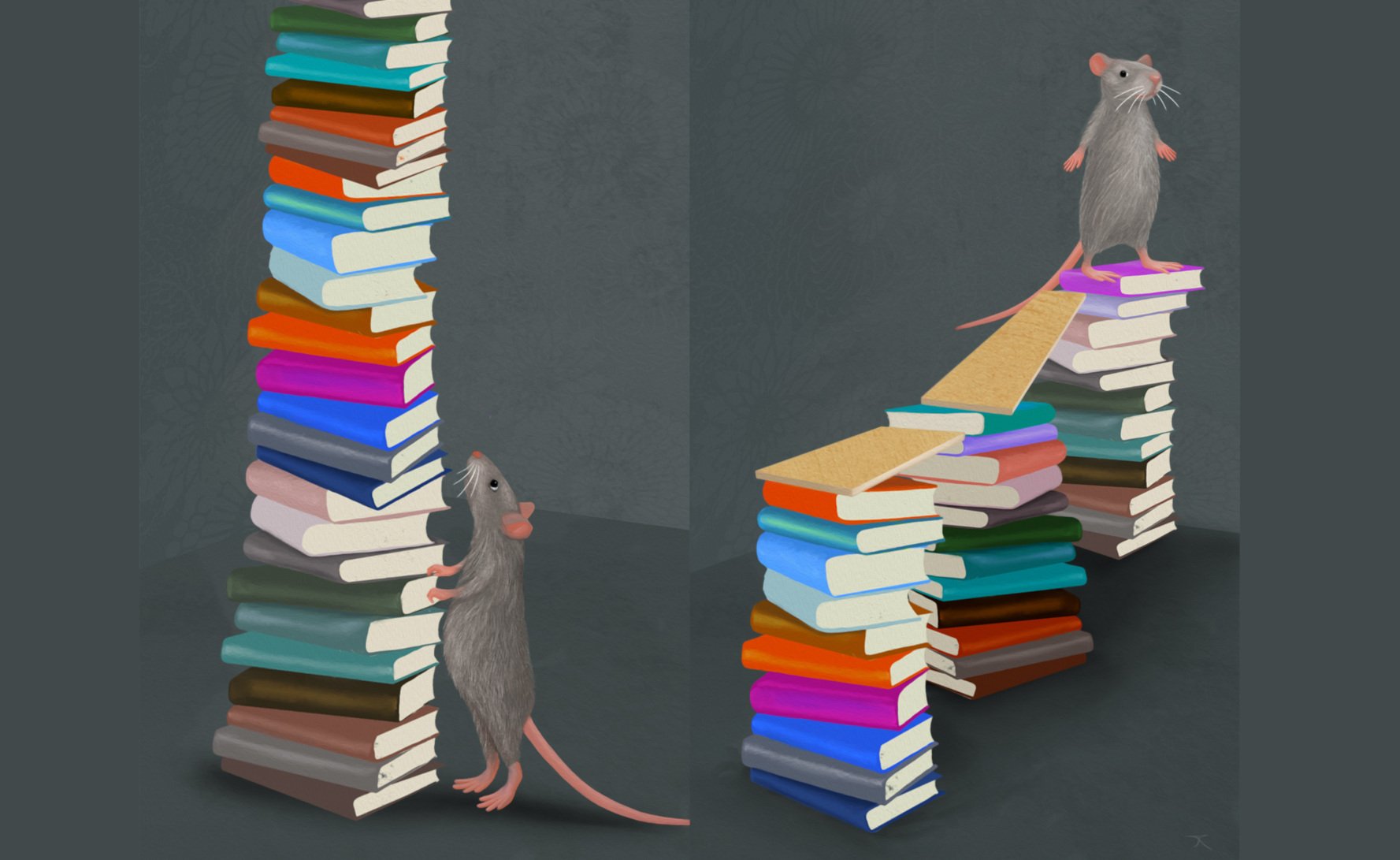Often the motto is to provide as much knowledge as possible as quickly as possible. However, if you want to memorize information for the long term, you should not constantly stress, but you should take breaks from learning. Researchers have now shed light on the neural mechanisms behind the so-called divergence effect through studies in mice. In the case of longer periods between learning repetitions, the animals would return to the same neurons rather than activate new ones. The researchers explain that this suggests that retraining a neural network that has already been used will root memories more deeply in it.
How does learning work and how is knowledge anchored in our minds? There are still many unanswered questions about the complex processes in our thinking apparatus. However, neuroscientists assume in principle that neurons are active during learning, enabling them to form new connections with others. This then causes the information to be stored, which can then be called up again by activating the same group of neurons. The fact that learning periods play a role in this concept has been described in humans for more than a century, and it has now also been demonstrated in many animal species. But the neural background to the divergence effect remained unclear. Scientists led by Annette Glass of the Max Planck Institute for Neurobiology in Martinsried have now dedicated themselves to this research topic.
They chose the mouse as a model animal. Because, as is well known, the basic neural mechanisms and brain functions are mostly similar between us and small rodents. As part of the study, science first carried out didactic experiments in labyrinth structures. The rodents had to memorize the position of a hidden chocolate bar in the complex arcade system. The mice were given the opportunity to explore the maze several times in a row and find the reward. Sometimes there were no breaks between learning explorations and in other cases there were breaks of varying lengths.
When mice learn with or without a break
As the scientists reported, the experiments initially confirmed the effectiveness of the spacing effect: “The mice we trained with longer rest periods between learning stages could not memorize the chocolate position as quickly,” Glass reports. “But the next day, the animals’ memory improved when they took breaks from the study.” The optimal duration of the break was 60 minutes.
In order to gain insight into the neural differences between learning with rest and without breaks, the scientists recorded the activity of neurons in the animals’ brains during maze tests. In addition, the so-called in vivo calcium imaging technology has been used, which can show in detail the neuronal activities in the brain of live animals. The researchers focused their study on the prefrontal cortex, where this area of the brain is known to play a role in learning processes and other cognitive functions.
As they report, the results of the investigation of nerve activity during learning with and without rest periods show the opposite of what they expected: “If the three learning stages follow each other, it is in fact clear that the same neurons are activated,” explains senior author Peter Golstein of the Institute of Max Planck Neurobiology. “After all, it’s the same experience with the same information. After a long break, on the other hand, one can rather imagine that the brain interprets the later learning phase as a new event and processes it with other neurons.”
Deeper Memories
But when the researchers compared the activities of neurons at different learning stages, they found just the opposite: During short periods of rest, the pattern of activation in the brain fluctuated more than during long periods of rest. In other words: in learning stages that follow each other in quick succession, mice usually activate different neurons. After longer rest periods, neurons from the first learning stage were also used again later.
As the scientists explained, this finding seems plausible against the background of the spacing effect: using the same neurons, the brain can strengthen the connections between them at each educational stage. So there is no need to create entirely new “wires,” according to the explanation. “We think that’s why memory benefits from long pauses,” Gollstein says.
And so, more than a century later, the study now provides deeper insights into the neural processes that underlie the clearly useful advice for effective learning: If you learn with interruptions, you have something of your knowledge for longer.
Source: Max Planck Institute for Neuroscience, specialized article: Current Biology, doi: 10.1016/j.cub.2021.06.085

“Alcohol buff. Troublemaker. Introvert. Student. Social media lover. Web ninja. Bacon fan. Reader.”







More Stories
Intelligence and Alzheimer's disease: How fit is your brain? Your eyes guide her
Can you feel climate change? This installation visualizes science
This vaccine eliminates all viruses